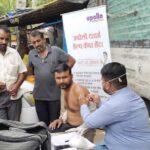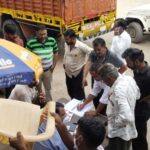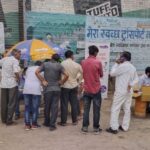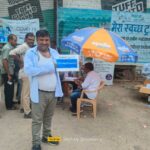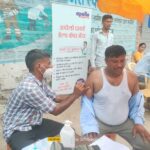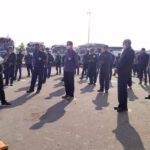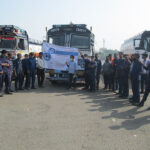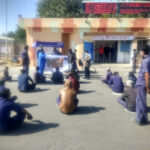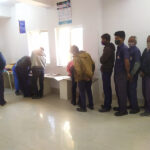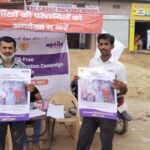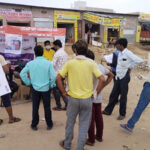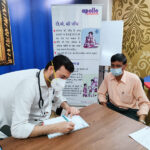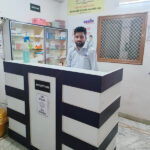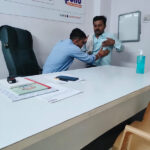Apollo Tyres Health Care Center
Plot No. 44, First Floor ,Transport Nagar, Basni 2ND Phase, Opposite Arihant Transport ,Jodhpur
Brief about our project– Our project is for truckers, allied and helpers. We aim for their better health by providing awareness and basic health facilities like checkup for TB/HIV/STI/VISION and also general checkup for diabetes, hypertension, blood group etc. We are aware of their preventable disease. Our main projects are TB/STI/HIV/VISION Related diagnosis. For the smooth functioning of this project, we have a great team.
Our Facilities and Services
- PROJECT COORDINATOR FOR COLLABERATE WITH TEAM AND NGO
- MBBS DOCTOR FOR GENERAL HEALTH CHECKUP AND TREATMENT
- LT FOR TESTING HYPERTENSION , DIABETES, BLOOD GROUP, HIV , TB
- OPTOMETRIST FOR VISION TESTING AND EYE RELATED DIAGNOSIS
- PHARMCIST FOR PROVIDING MEDICINES AND PATIENT REGISTRATION
- COUNSELLOR FOR COUNSELLING ABOUT AWARNESS OF HEALTH
- OUT REACH WORKER FOR GUIDING TO PATIENT ABOUT HOSPITAL WORK
Trucker’s profile: Truckers are the targeted community of our project. They are also the bridge population, which transforms the HIV /STI / TB infection from a core group of the general population. The majority of drivers do not own the truck, they work “on their own” or in an autonomous way on an average of 12.7 hours per day, and this has significant effects on their health and quality of life. They are underpaid and don’t get enough time to eat, sleep, or rest. These truck drivers are highly dependent on the road side eateries. They drive 400 to 600 Km per day even taking risk at times with overloaded trucks and poor maintenance of the trucks. To stay awake for longer trips, truck drivers have been trained to use drugs stimulants. The truck drivers engage in high risk sexual behaviours, making them vulnerable to Sexually Transmitted Diseases (STD). They are twice as likely to acquire the Human Immunodeficiency Virus (HIV) infection and also serve as bridge population linking with the general population.
Profile of implementation sites: This project is implemented by Nav Srishti and supported by Apollo Tyres Foundation in the Transport Nagar Basni, Jodhpur.
PROJECT IMPLEMENTATION STRATEGY:-
- BEHAVIOUR CHANGE COMMUNICATIONS
Behaviour Change communication to increase knowledge on HIV/AIDS & RTI/STI and to promote safer sex practices among truckers. Effective communication is important to bring about any behaviour change among HRBG. Consistent massages from a variety of legitimate sources must be disseminated in an interactive manner to affect behaviour change. Sustained and regular work will help BCC in achieving success in these areas. One to One interaction, IEC material, Group discussion, Mass media and peer educator involvement is important.
- STI CASE MANAGEMENT
Trucker is known to be the most potent carrier of HIV virus due to numerous reasons. Truck drivers spend a lot of time on the road while at work, which force them to stay away from their regular partners. They are more susceptible to HIV because of their drug use and lack of education. In this we ensure Testing, referral and access to STI services.
- CONDOM PROMOTION
In TI programme promotion of safe practices is very important. In this strategy, we ensure the easy accessibility, availability and promotion of Condoms. The commodities supplied through peers, outreach workers and social marketing.
ONE TO ONE SESSION (INTERPERSONAL COMMUNICATION-IPC)
One to one Group communication is applicable to groups containing three to 20 people. Group communication cannot be done effectively in bigger groups; but communication between two persons can be done easily. A facilitator and group members who share a sense of belonging, common objectives, and mutual respect are necessary for effective group communication.
- One of the most embarrassing moments in a one-on-one interaction is, not knowing what to say. You can pretty much avoid such situations where there are many people involved.
- Choose Your Physical Location Wisely. Another interesting aspect of group socialization is your physical location within the group.
ONE-GROUP INTERACTION: Members of the group usually show each other that their group is doing well and achieving their goals. The transitive characteristic of making a group a “group” is that individual members are committed to the goals of the entire group. They want to be team player, which is shown in their language and actions.


